There are great people who try to make their impact on the world little by little, then there are the few who want to change the world, and succeed in doing so. This article is about some well-known biologists who have made significant contributions to the progress of modern biology. The list is not exhaustive, but represents a few well recognized names in the field.
Leroy Hood (1938- , Systems Biology)
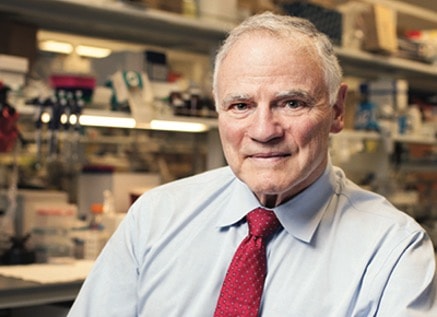
Leroy Hood is an American Biologist who has served at the University of Washington and the California Institute of Technology. Hood has created ground-breaking scientific instruments that have enabled significant progress in biological and medical sciences. Hood’s early discoveries included solving the long-standing mystery of how humans and all vertebrates’ immune systems generate the large array of antibodies needed to fight a variety of pathogens and foreign substances. In his article “Antibody Diversity”, he indicated that antibodies’ functional diversity is governed by the amino acid sequence diversity that accompanies it [1].
Hood also set out developing instruments, such as the first automated DNA sequencer, which allowed for faster gene readings. In Future Science Journal “Interview with Leroy Hood”, he talked about the creation of the automated DNA sequencer. He said it was a real milestone, since it not only allowed the HGP (Human Genome Project) to be completed, but it also foretold today’s high-throughput genomics- a key component of the large data that systems biology requires [2].
Christiane Nusslein-Volhard (1942- , Developmental Biology)
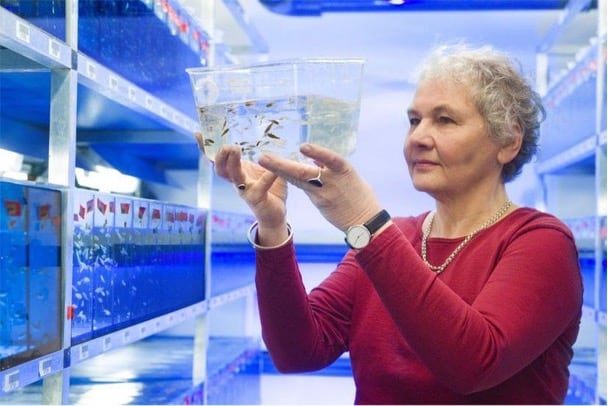
Christiane Nusslein is a German developmental biologist and a 1995 Nobel Prize in Physiology or Medicine laureate. She is the only woman from Germany to win a Nobel Prize in Science. She spent the twentieth and twenty-first centuries in Europe researching how genes affect embryonic development in flies and fish. She concentrated her study in the 1970s on the genetic regulation of development in the fruit fly Drosophila melanogaster. She also discovered the first morphogen, a protein encoded by the bicoid gene in flies. In “A Gradient of bicoid Protein in Drosophila Embryos”, she wrote about bicoid gene. She said in drosophila, the maternal gene bicoid (bcd) regulates anterior development and its m RNA is found in the oocyte’s anterior tip and in the early embryo [3].
Nusslein-Volhard also studied the genetic regulation of embryonic development in zebrafish, extending her discoveries and establishing the zebrafish as a model organism for vertebrate development research.
J. Craig Venter (1946- , Human Genetics)
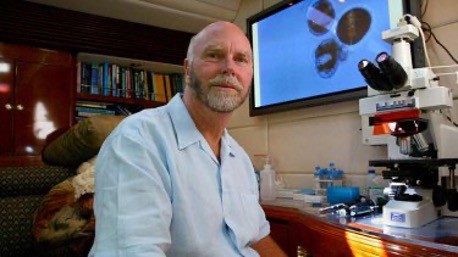
J. Craig Venter is an American biotechnologist. He is known for assembling the first team to transfect a cell with a synthetic chromosome and guiding the first draft sequencing of the human genome. Venter was a pioneer in the use of automated gene sequencers, and in 1990, he invented “expressed sequence tags (ESTs), a revolutionary new technique for discovering and labeling genes. In this approach [4], using an automated DNA sequencing machine, complementary DNA is partially sequenced, or “tagged”. The resultant sequences (ESTs) are long enough to differentiate one from the next.
Moreover, in 1995, Venter identified the genome sequence of Haemophilus influenza, a bacteria that causes earaches and meningitis in humans, in conjunction with American molecular geneticist Hamilton Smith of Johns Hopkins University. It was the first time that the whole sequence of a free-living organism has been decoded, and it took less than a year to finish.
Ronald M. Evans (1949- , Molecular Genetics)
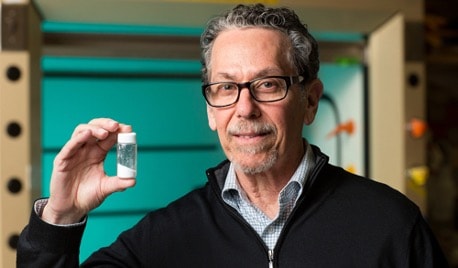
Ronald M. Evans is an American Biologist who is 2020 NOMIS Distinguished Scientist and has been a professor at the Salk Institute for Biological Studies since 1978 and holder of the March of Dimes Chair in Molecular and Developmental Biology since 1998. Evans has made several notable discoveries to research, including the discovery of the nuclear hormone receptors (NRs), a “superfamily” of molecules that respond to different steroid and thyroid hormones, vitamins A and D, as well as dietary lipids and bile acids. Hormones, in turn, affect gene networks across the body, which govern physiologic pathways from embryonic development to maturity, according to the unified hypothesis. Evans has also discovered several unique cancer and diabetes pathways that may be targeted with drugs that activate these receptors. An example of this discovery is given in his article named: “Triptolide targets super-enhancer networks in pancreatic cells and cancer-associated fibroblasts”. In this article, Evans stated that the MYC proto-oncogene is one of the most important molecular players in several cellular signaling pathways in many cancers, including pancreatic cancer [5].
More recently, exercise mimetics, a type of drugs that stimulates gene networks in muscle tissue, were discovered by him. He clearly explained this in his article “Exercise Mimetics: Impact on Health and Performance”, that exercise mimetics offer the benefits of fitness without training by directly acting on genes, leading to possible novel therapeutics for children with dystrophy and adults with type 2 diabetes [6].
Jack W. Szostak (1952- , Genetics)
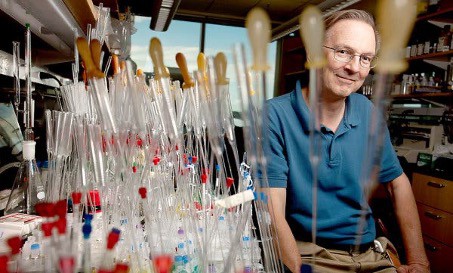
Jack W. Szostak is a Canadian biologist, Nobel Prize laureate, and professor of Genetics at Harvard Medical School. Szostak has made significant contributions to the field of genetics. He is credited with the world’s first artificial yeast chromosome. In the article, “Construction of artificial chromosomes in yeast”, he explained this artificial yeast chromosome shortly: In yeast, fifty-five-kilobase long artificial chromosomes with cloned genes, replicators, centromere, and telomeres were created. Many of the features of natural yeast chromosomes may be found in these molecules [7]. This breakthrough aided scientists in mapping the location of genes in mammals and developing gene manipulation techniques.
Furthermore, his laboratory turned its research focus to studying RNA enzymes in the early 90s. He created in vitro evolution of RNA technique, which allows for the identification of RNAs with desired functions through a series of selection, amplification, and mutation cycles. Also, he isolated the first aptamer.
His laboratory is now working on understanding the origins of life on Earth as well as the creation of artificial cellular life in the lab. They have investigated the processes through which RNA templates may have replicated on early Earth before enzyme catalysts appeared. Mainly, they have been looking at imidazole-activated ribonucleotides (phosphorimidazolides) as monomers capable of elongating a new RNA strand.
Sydney Brenner (1952-2010, Biology-Genetics)
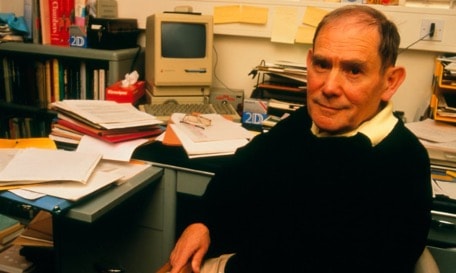
Sydney Brenner is a Nobel Laureate whose research on the roundworm Caenorhabditis elegans led to important genetic and developmental biology findings. Brenner figured out how cells utilize DNA to generate the proteins that make life possible. He discovered that three DNA base sequences code for the amino acids that make up proteins. He also conducted research on the role of genes in determining the complex structures observed in higher organisms. In “The Genetics of Caenorhabditis Elegans”, Brenner explicitly indicates that many of the molecular pathways involved in gene expression in prokaryotic microorganisms have already been discovered in eukaryotic cells, albeit in a somewhat modified form. Furthermore, he stated that in both types of creatures, the genetic code is universal, and the method of protein synthesis is nearly the same and by contrast, there are significant variances in the organization of genetic material [8].
Brenner went on to make another big discovery in biology by discovering and developing the translucent worm C.elegans as an excellent animal model; the worm is now utilized in laboratories all over the world. As Heidi Tissenbaum mentioned in her journal
“Using c.elegans for aging research”, c.elegans has been an invaluable animal for aging research, and Brenner’s research on elegans has resulted in the identification of hundreds of genes and regimens that modulate lifespan” [9]. In conclusion, his early work on C.elegans and subsequent investigations led to him and two colleagues, obtaining the Nobel Prize in Physiology or Medicine in 2002.
Edward O. Wilson (1929-2021, Biology- Myrmecology)
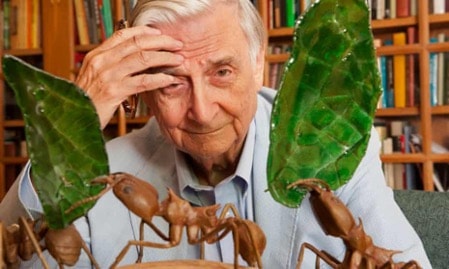
Edward O. Wilson was an American biologist, naturalist, and writer. His expertise was myrmecology, or the study of ants, for which he was dubbed Ant Man and the world’s leading expert. Wilson has been called “the father of sociobiology” and “the father of biodiversity” [10], for his environmental activism as well as his secular-humanist and deist theological and ethical ideas. He conducted a comprehensive study ant and ants’ behavior, culminating in the encyclopedic work, The Ants. He argued for a sociobiological explanation for all social behavior based on the behavior of social insects because much self-sacrificing behavior on the part of individual ants can be explained based on their genetic interests in the survival of their sisters, (with whom they share 75 percent of their genes).
Apart from these, Wilson examined strategies for uniting the sciences and how they could be able to link the sciences and the humanities in his 1998 book Consilience: The Unity of Knowledge. He said that knowledge is one and the same thing, not split between science and humanistic inquiry [11]. The term “consilience” was used by Wilson to characterize the synthesis of knowledge from several specialized disciplines of human activity. He characterized human nature as a set of epigenetic rules, or mental developmental genetic patterns. Culture and rituals, he claimed, artifacts of human nature, not components of it. Lastly, he said that while art is not inherent in human nature, our appreciation of it is.
For centuries, biologists have made many discoveries of great importance to the field and to society by keeping their eyes locked firmly on the prize. Now, with virtual reality, scientists will be able to explore their subject matter in new and exciting ways previously inconceivable. VR Lab Academy provides its users with the necessary tools to grow a sustainable source of general knowledge. No longer is access to the universe limited to large cities and their surrounding areas, more and more people will be able to expand their knowledge at an even greater rate. With expansion of knowledge comes new fields of applications that where previously unknown. If giving an incentive to scientists to explore and try to discover is able to bring out the brilliant minds, then it would definitely affect the future profoundly. VRLab Academy will keep supporting a generation of problem solvers and creative minds.
Take a look at all experiments at VRLab Academy and enhance your teaching power with us.
References
[1] Leroy Hood & George Smith, “Antibody Diversity”, 2000.
[2] Future Science Journal “Interview with Leroy Hood”, 2013.
[3] Christiane Nussler Volhar & Wolfgang Driever, “A Gradient of bicoid Protein in Drosophila Embryos”, 1998.
[4] Micheal Lemanick, “J.Craig Venter: Gene Mapper”, 2000.
[5] Ronald M. Evans & Pawan Noel & Haiyong Han, “Triptolide targets super-enhancer networks in pancreatic cancer cells and cancer-associated fibroblasts”, 2019.
[6] Ronald M. Evans & Weiwei Fan, “Exercise Mimetics: Impact on Health and Performance”, 2017.
[7] Jack W. Szostak, “Construction of artificial chromosomes in yeast”, 1983.
[8] Sydney Brenner, “The Genetics of Caenorhabditis Elegans” ,1983.
[9] Heidi Tissenbaum, “Using c.elegans for aging research”, 2014.
[10] Michael Becker, “MSU presents Presidential Medal to famed scientist Edward O. Wilson’, 2009.
[11] Charles Gillespie, "E. O. Wilson's Consilience: A Noble, Unifying Vision, Grandly Expressed", 1998.